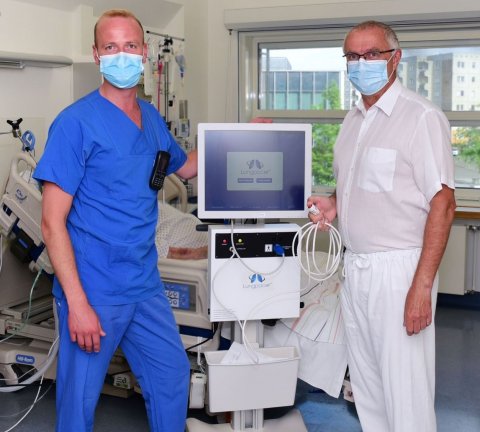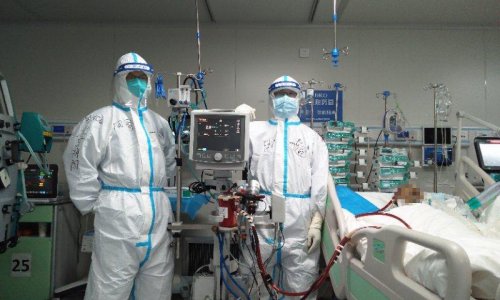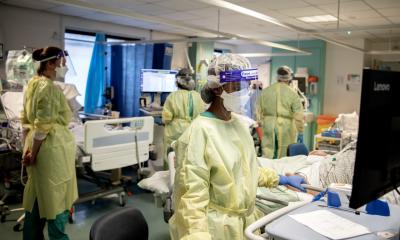News • Weaning from respiration
COVID-19: novel Diaphragm Therapy shows promise
Department B for Internal Medicine of the University Medical Center Greifswald successfully used, within an international multi-center trial, a special diaphragmatic stimulation therapy to treat a COVID-19 patient as the first clinical site in Europe.

Photo: Manuela Janke/UMG
"The first patient treated in this trial happened to be a woman who survived COVID-19, but was not able to be weaned from mechanical ventilation," said Prof. Dr. Ralf Ewert, the head of the Pneumology, Infection Disease and Weaning Centre at the University Medical School of Greifswald. "With the new procedure, we were able to treat this patient, who is over 65 years old and has already spent 38 days on ventilator and enabled her return to independent breathing. In total, we have now included four patients into the study and are pleased to contribute to this promising technology with our results,” says the Greifswald pneumologist and mechanical ventilation specialist.
The Lungpacer System by Lungpacer Medical Inc., a Canadian medical device company, is a novel technology that stimulates the phrenic nerves during mechanical ventilation and thus strengthens the weakened diaphragm muscle to assist in weaning from the ventilator. The University Medicine Greifswald is the first hospital in Germany to participate in the so-called RESCUE-3 study, to provide safety and effectiveness data for the new procedure. In Germany, the system is currently only available as part of clinical studies.
During the COVID 19 pandemic, there are more patients in hospitals requiring invasive mechanical ventilation over long periods of time. While mechanical ventilation is live-saving in the case of respiratory failure, it can also be harmful, especially if it is required over a longer period of time. Ventilators use positive pressure to push air into the lungs so that the main respiratory muscle, the diaphragm, is not used. The diaphragm is a plate consisting of muscles and tendons that separates the chest from the abdomen. As a result, mechanical ventilation and artificial immobilization of the patient quickly leads to loss of diaphragmatic strength. This is what doctors refer to as Ventilator-Induced Diaphragmatic Dysfunction.
The Lungpacer System is designed to be easily integrated into the routine care of patients with invasive mechanical ventilation. The system uses the LIVE catheter, which is similar to central venous catheters used in most ventilated patients. The catheter can be used to inject fluids and medications and to stimulate the diaphragm and phrenic nerves to train the diaphragm muscle to assist in weaning.
The Lungpacer Control Unit is a mobile, portable unit used with the catheter and intermediate cable to provide temporary diaphragmatic neurostimulation.
Source: University of Greifswald
13.07.2020







